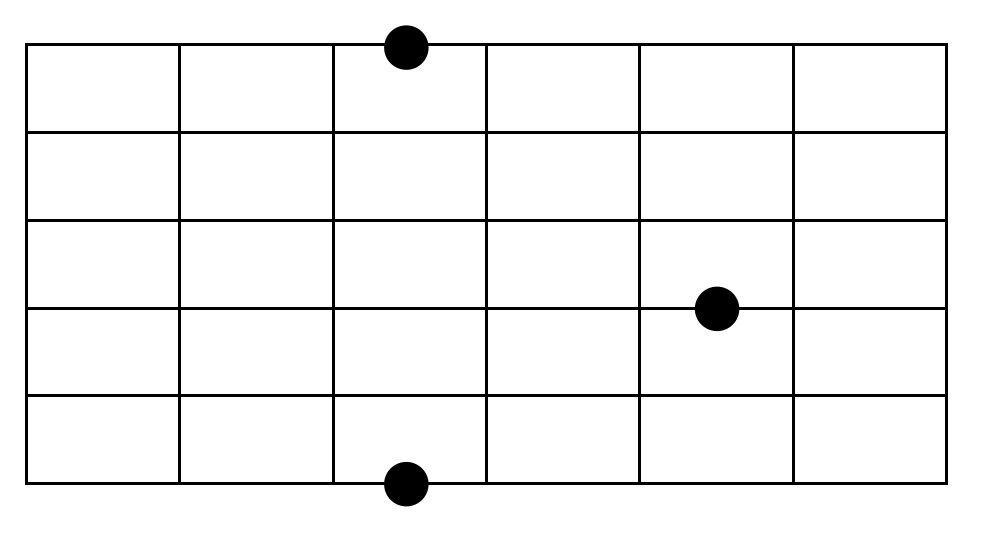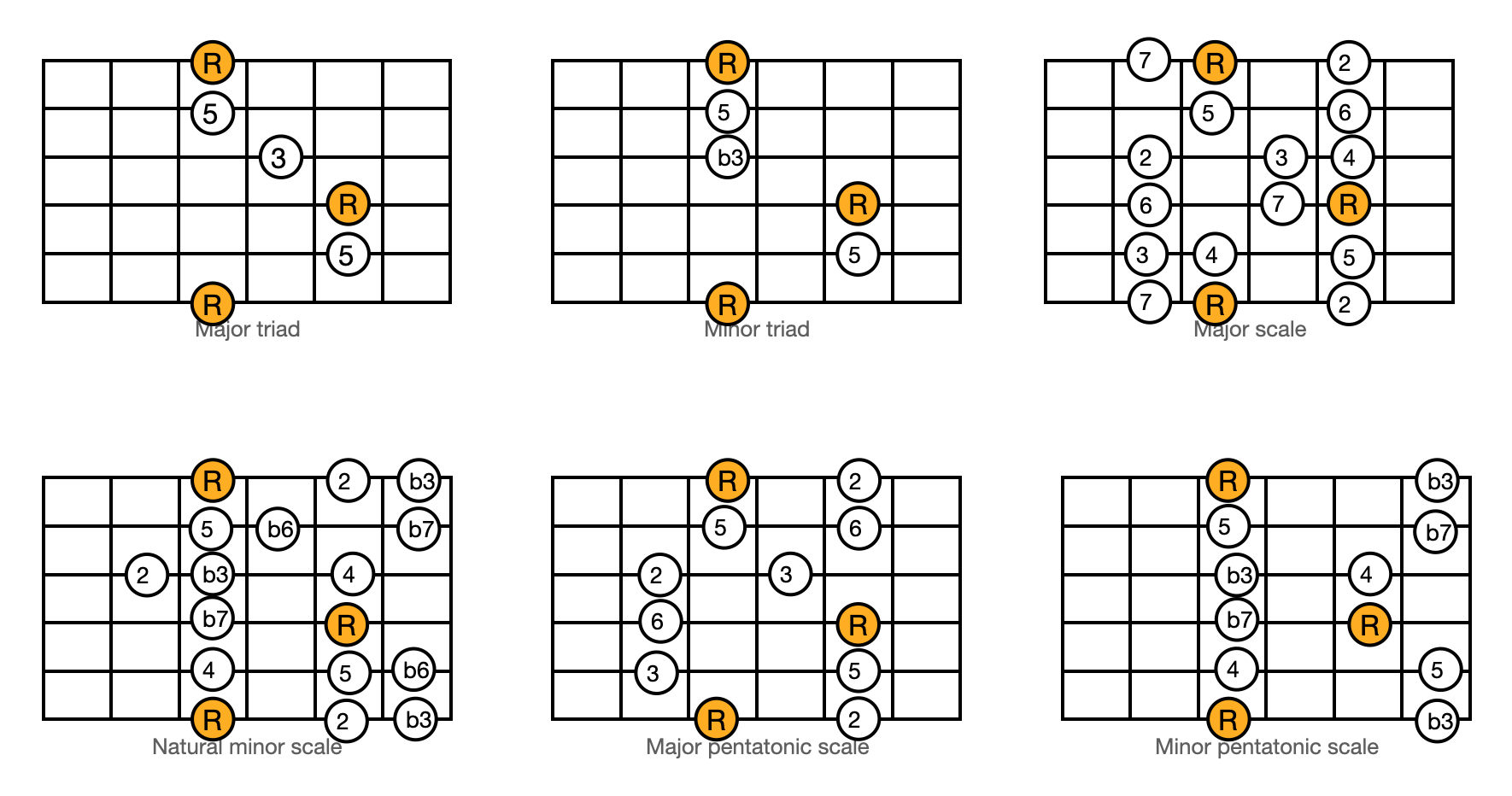Home › Forums › Active Melody Guitar Lessons › EP557 question
- This topic has 7 replies, 4 voices, and was last updated 3 weeks ago by
 Donald S.
Donald S.
-
AuthorPosts
-
-
January 7, 2025 at 9:00 am #384864
Hi,
First time posting.I’m familiar with the CAGED system, pentatonic, diatonic and blues patterns. In Brian’s lessons, he will stay in the same position on the neck, switch patterns and play different chords. So, in order to learn how to do that, I’m watching EP556-EP560. In EP557 when Brian talks about playing A Natural Minor Scale, he says he us using the E shape, but it looks like the G pattern to me. I can see how it us the E minor chord shape, but it looks like he switches from pattern 2 to pattern 1 in the minor section. But in the major section if the handout, Brian is using the E pattern or pattern 2.
I feel confused like I’m missing something important. I thought he was talking about Pattern 2 the E pattern in this lesson?
TIA!
-
January 7, 2025 at 11:06 am #384865
Hi,
I’m not sure I understand your question correctly, to be honest.
Everything in this lesson is based on the C and E shapes.
The positions of the roots in the E shape are as follows:This shape is the same no matter how you “decorate” it: natural minor scale, pentatonic minor scale, arpeggio, …
It really isn’t possible to confuse this shape with the G shape.As for the pattern numbers… I don’t think it is useful to assign a number to this particular configuration. It’s arbitrary, it’s confusing and it’s not very useful.
-
January 7, 2025 at 11:27 am #384868
I rewatched the video, in it, Brian says when talking about the E minor section, I switched to the G pattern. So really the lesson is about the E and E minor chord shapes, not the E pattern, though he uses the E and G CAGED patterns in his explanation.
Thanks for sharing your thoughts.
-
-
January 7, 2025 at 4:01 pm #384878
Hi Donald, it sounds to me that your question revolves around the difference between major and minor scales over a given CAGED chord shape. If you’re talking about A natural minor, remember that those are the same notes as the C major scale. Played from C to C it’s the C major scale. Those same notes played from A to A give the A natural minor scale. So, the A minor chord at the 5th fret is based on the E CAGED shape. The C major chord at the 5th fret is based on the G-CAGED shape. Seeing the scale in the major context over the C chord would be C major, G-shape. But, since it’s being played over the A minor chord, it’s A natural minor over the E-shape minor chord.
It’s the relationship of major and relative minor… same notes in the scales, but different root notes to start the scale.
Hope this helps. Ask more if we’ve missed the mark.
-
January 10, 2025 at 10:41 pm #385360
Michael,
Thanks for the reply! I learned the CAGED system by starting with the pentatonic patterns CAGED.I know they’re based on the chord shapes CAGED. But, In EP557 Brian starts off with the E shape, so I’m thinking E pentatonic or diatonic patterns, and I was wrong. He us in fact talking about the E chord shape. Then he switches from major to minor and when he does, he switches to the G pentatonic pattern at the A minor position.Again thank you for trying to help me clear up my confusion.
-
-
January 8, 2025 at 2:47 am #384889
I think you are mixing up “shapes” and “patterns”.
In the diagram below, you’ll find most “decorations” of the “E shape”.The reason why this is called that way is because, if you put 3rds and a 5ths relative to the Roots, you’ll get an E major triad. Similarly, putting minor thirds and fifths relative to the roots, you’ll get an E minor triad.
But what really matters is the relative positions of the roots, or if you prefer, the shape they are forming.If you look at the diagram for the minor pentatonic scale, you’ll see what Brian calls “Pattern 1”.
The diagram for the major pentatonic scale corresponds to what Brian calls “Pattern 2”.
But these names are confusing because not everyone uses the same convention. Again, what matters is the chord shape.Now, in the minor pentatonic diagram you can replace “b3” by “R” (and everything else accordingly, of course) and obtain the relative major pentatonic scale around a G shape.
Similarly, in the major pentatonic diagram you can replace “R” by “b3” and obtain the relative minor pentatonic scale around a D shape.So, you first have to decide what you call “Root” and recognize the shape of the neighboring octaves of that Root. Next, you “decorate”
with the appropriate intervals.-
January 8, 2025 at 4:06 am #384895
…there is an error in the diagram for the minor pentatonic scale: the “5” on the fifth string should be a semitone lower (i.e. to the left). Sorry about that!
-
-
January 8, 2025 at 8:19 pm #384927
Hi Donald,
There is a lot of wisdom in these answers. I first learned pentatonic patterns as most of us do. In the end, the thing that will give you freedom on the fretboard is seeing your scales, pentatonics, arpeggios, triads and intervals around the roots of a key and especially in relation to how the roots fall in the CAGED shapes as in the diagrams Jean-Michel provided.
There are two conventions for naming pentatonic box patterns but sticking to the root shapes avoids any confusion and is the basis for navigating the fretboard.
John
-
-
AuthorPosts
- The topic ‘EP557 question’ is closed to new replies.

